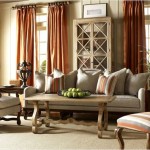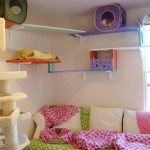How to Decorate a Living Room with a Rug
The living room is often considered the heart of the home, a space where families gather, entertain guests, and relax. A well-decorated living room should reflect the homeowner's personality and style while creating a welcoming and comfortable atmosphere. One key element that can significantly impact the overall look and feel of a living room is the rug. Rugs can define spaces, add warmth, and introduce color and pattern, making them a valuable asset in interior design.
Choosing the Right Rug Size and Shape
Selecting the right rug size and shape is crucial for achieving a balanced and harmonious living room design. A rug that is too small can make the room feel cramped, while a rug that is too large can overwhelm the space.
For a cohesive look, consider the size of your furniture. A general rule of thumb is to choose a rug large enough to accommodate all the furniture pieces in the seating area, with at least the front legs of the sofa and chairs resting on the rug. For example, in a standard living room layout with a sofa, two armchairs, and a coffee table, a rug that extends approximately 18-24 inches beyond the furniture on all sides is typically ideal.
The shape of the rug can also influence the flow of the room. Rectangular rugs are most common, but other shapes like round or oval rugs can add a touch of whimsy or formality to the space. Round rugs are particularly effective in defining a conversation area and can soften the corners of a room.
Choosing the Right Rug Style and Material
With a wide variety of rug styles and materials available, selecting the right rug for your living room can feel overwhelming. Consider the overall style of your living room and choose a rug that complements the existing furniture and décor.
For a contemporary living room, a minimalist rug with a geometric pattern or a solid, neutral color might be a good choice. A traditional living room can be enhanced with a Persian rug or a rug with intricate floral patterns. For a bohemian look, opt for a rug with vibrant colors, tribal patterns, or a distressed finish.
The material of the rug will also affect its durability, comfort, and appearance. Wool rugs are known for their durability, warmth, and natural beauty. Synthetic rugs, such as nylon or polyester, are more affordable and easier to clean. Natural fibers like jute or sisal offer a rustic, natural look and feel. Consider factors like your lifestyle and budget when choosing the appropriate rug material.
Using Rugs to Define Spaces
Rugs are an excellent tool for defining distinct areas within an open floor plan. If your living room is open to the dining room or kitchen, you can use a rug to create a visually separate seating area. This technique helps to define the purpose of each zone and creates a more organized and functional space.
In a large living room, multiple rugs can be used to break up the space and create intimacy. For instance, a rug under the coffee table can define a smaller conversation area, while a larger rug in the center of the room can accommodate the entire seating arrangement.
Rugs can also add depth and visual interest to a living room. A rug with a bold pattern can be used as a focal point, drawing attention to a particular area. Layering rugs can create a more eclectic and layered look. For example, you could place a smaller rug on top of a larger rug to add texture and dimension.

51 Living Room Rug Ideas Stylish Area Rugs For Rooms

How To Decorate A Large Living Room Ruggable Blog

Design Inspiration How To Decorate With Area Rugs

26 Best Living Room Rug Ideas Area Design

8 Decorating Ideas For Styling A Small Living Room Ruggable Blog

51 Living Room Rug Ideas Stylish Area Rugs For Rooms

42 Unique Rug Ideas For A Small Living Room Rugs Direct

11 Modern Rug Ideas To Revive Your Living Room Nb

26 Best Living Room Rug Ideas Area Design

51 Living Room Rugs To Revitalize Your Space With Style







